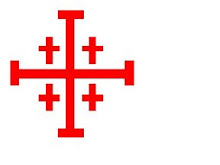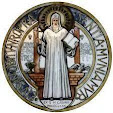
In this day when the Episcopal Church and the Anglican Communion are fractured by dissension I find the following excerpt from Origin helpful.
“I think that both the temple and the body of Jesus can be seen together as a type of the Church. For the Church is being built out of living stones; it is in process of becoming a spiritual dwelling for a holy priesthood, raised on the foundations of apostles and prophets, with Christ as its chief cornerstone. Hence it bears the name “temple.” On the other hand, it is written: You are the body of Christ, and individually members of it” (Origen’s Commentary on the Gospel of John).
This refers to the Church as it is, not to the Church as idealized. The key phrase is, “it is in process.” Karl Barth, a last century theologian remarked that one of God’s miracles is that the Church still survives. When looking at the Church and its troubles, take the long view, God does. He views the Church from an eternal perspective. There is nothing new under the sun, not even the dissension that marks our contemporary experience.
Origen goes on to comment on the Church of his day.
“Thus even if the harmonious alignment of the stones should seem to be destroyed and fragmented and if, as described in the twenty-second psalm, all the bones which go to make up Christ’s body should seem to be scattered by insidious attacks in persecutions or times of trouble, or by those who in days of persecution undermine the unity of the temple, nevertheless the temple will be rebuilt and the body will rise again on the third day, after the day of evil which threatens it and the day of consummation which follows” (Origen’s Commentary on the Gospel of John).
Origen links together Christ’s body and the Body of Christ which is the Church.
Accordingly the Psalmist says prophetically of the Christ and his Body,
“I am poured out like water, and all my bones are out of joint; my heart is like wax; it is melted within my breast; my strength is dried up like a potsherd, and my tongue sticks to my jaws; you lay me in the dust of death. For dogs encompass me; a company of evildoers encircles me; they have pierced my hands and feet- I can count all my bones- they stare and gloat over me; they divide my garments among them, and for my clothing they cast lots” (Psalm 22:14-18).
The Church is indeed scattered by insidious attacks in persecutions, times of trouble, and by those who in our days undermine the unity of the temple which is the Body of Christ. Make no mistake; the unity of the Body of Christ is founded upon a common understanding of the teaching of the Church. To quote St. Vincent of Lerins (AD 434), “we take the greatest care to hold that which has been believed everywhere, always and by all.” In our day that finds clear expression in the Anglican Covenant. To undermine the unity of the Body of Christ by claiming some “prophetic” superiority to the Body as a whole is perilous. The Lord testifies, “They speak visions of their own minds, not from the mouth of the LORD” (Jeremiah 23:16).
Rather than follow the dubious spirit of theological innovation, follow the recommendation of the Lord Himself! “Thus says the LORD: "Stand by the roads, and look, and ask for the ancient paths, where the good way is; and walk in it, and find rest for your souls. But they said, 'We will not walk in it’ (Jeremiah 6:16). The long history of the Church has many examples of those who want to drink from a different well. There is nothing new under the sun!
This has tremendous implications not only for the Anglican Communion and The Episcopal Church, but for us also as individual believers. It is of vital importance that our feet are firmly planted on both Holy Scripture and the Teaching of the Church as it comes down to us through the centuries. One way of preserving this is by embracing the characteristic three-fold Spiritual model provided by Anglican Spirituality: The Daily Prayer Offices; Recollection, the practice of the awareness of the Presence of God in meditation and short informal prayers: and in frequent Eucharist. This three-fold emphasis flows down to us through the Benedictine tradition. You and I have the unique privilege of anchoring our faith in this tradition by affiliating with the Order of St. Benedict. If you are interested, ask me how.
There is a day coming of restoration for the Church, not only the final day when Christ comes to claim his own, but the history of the Church testifies that there have always been seasons of spiritual renewal for the Church which is the body of Christ. Until that day we are called to make firm our faith; and to pray and labour for fresh springs of the Spirit in the life of the Church.




